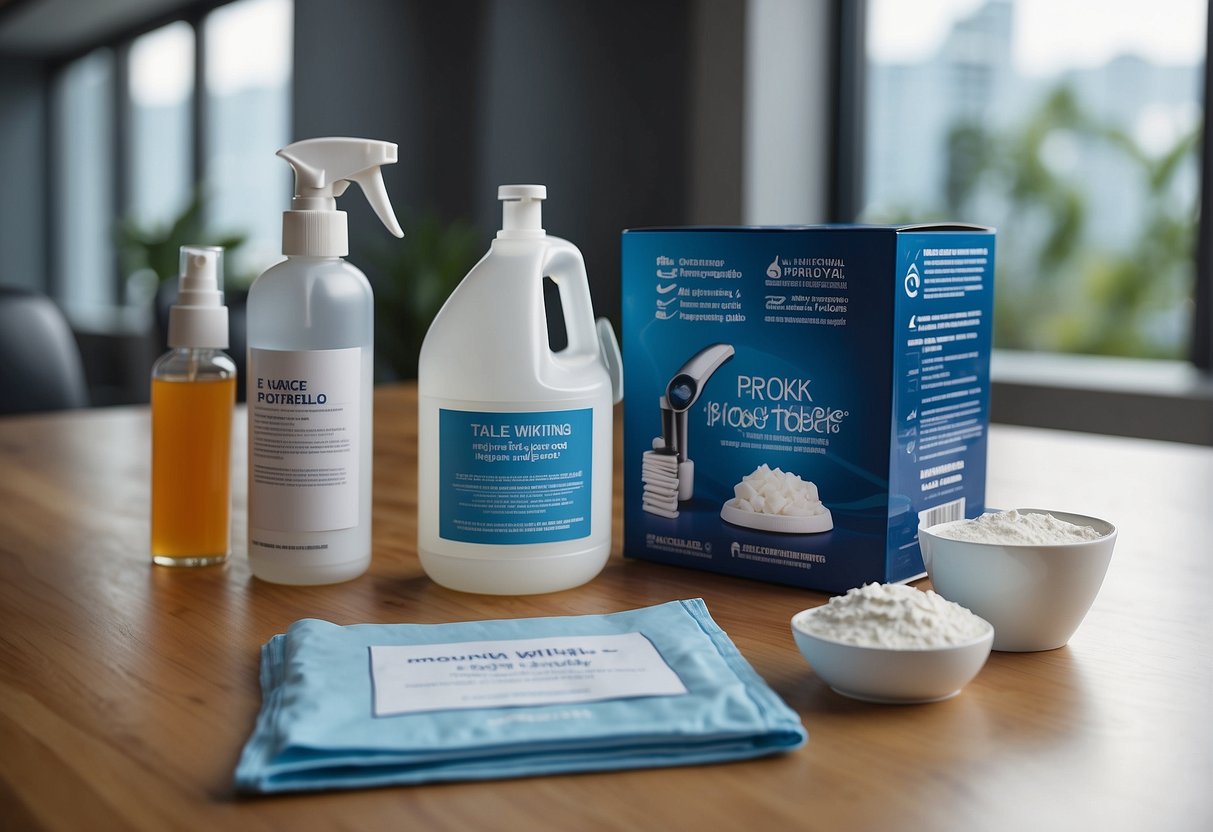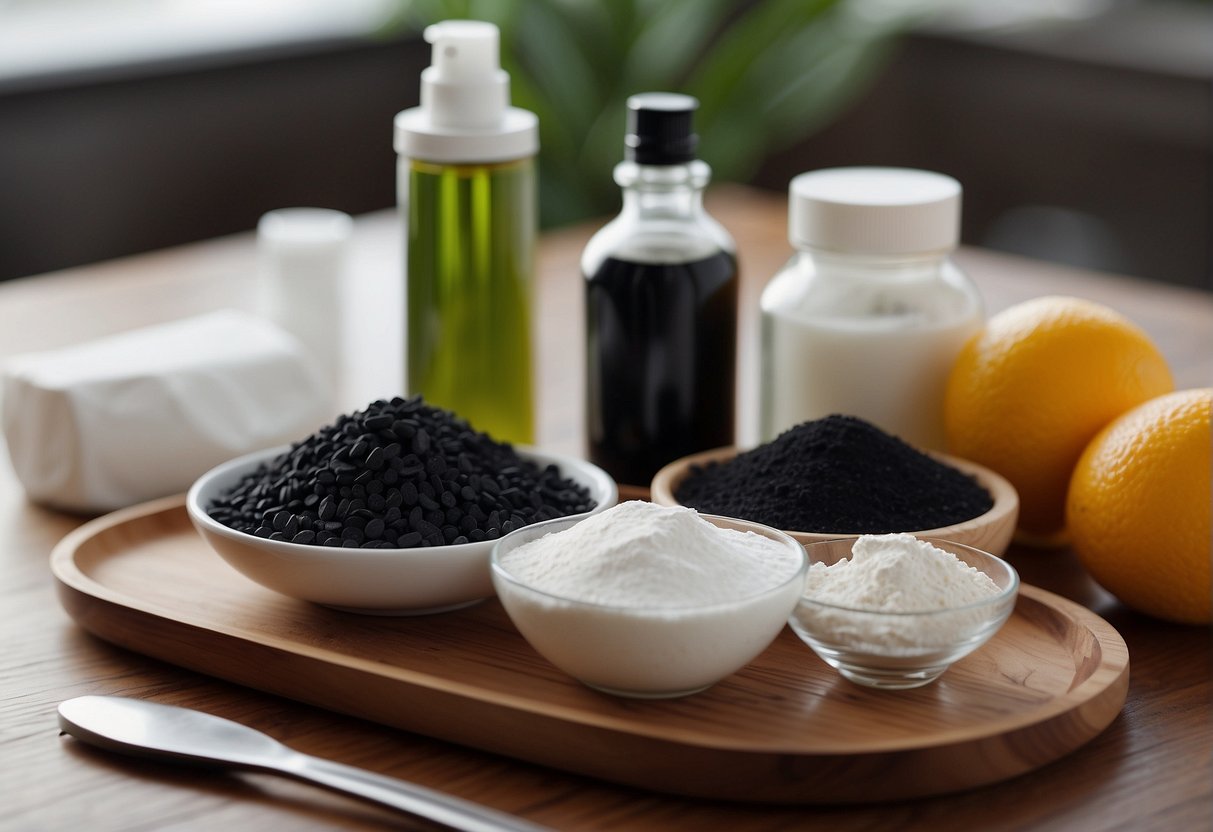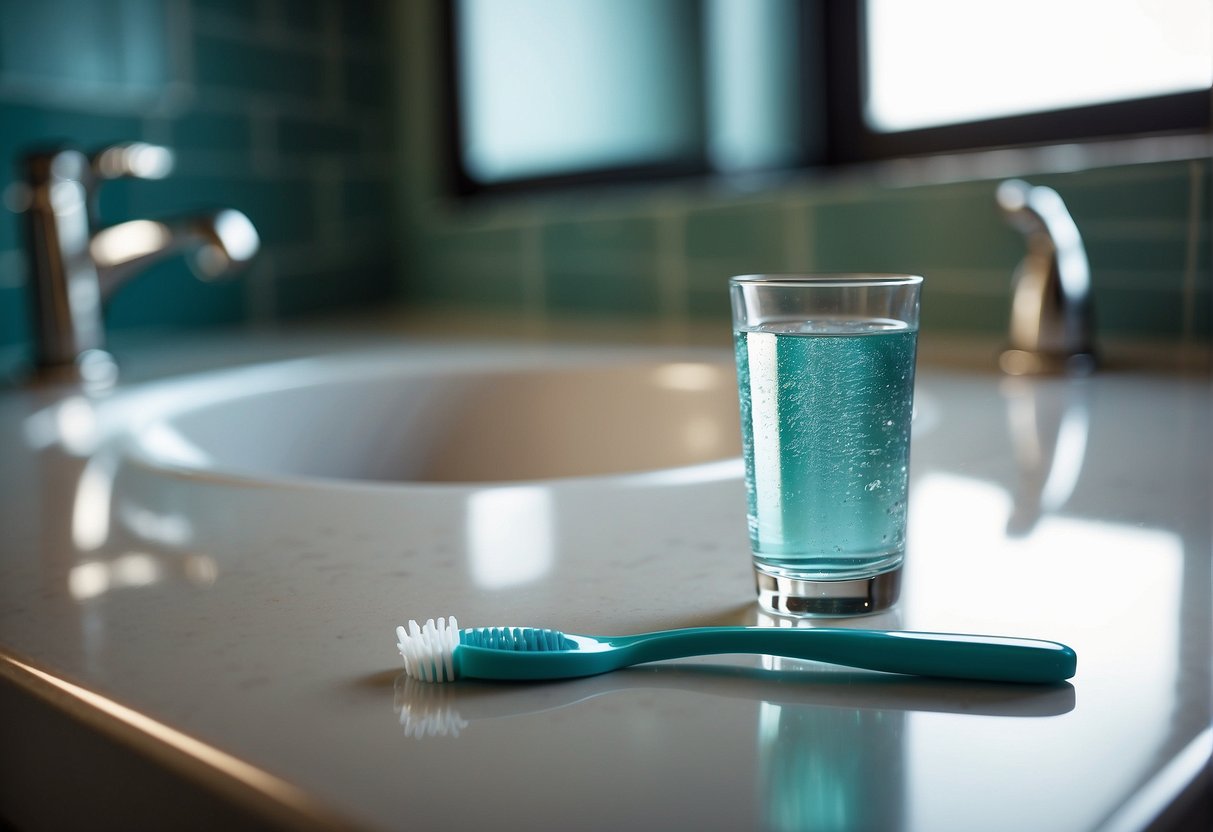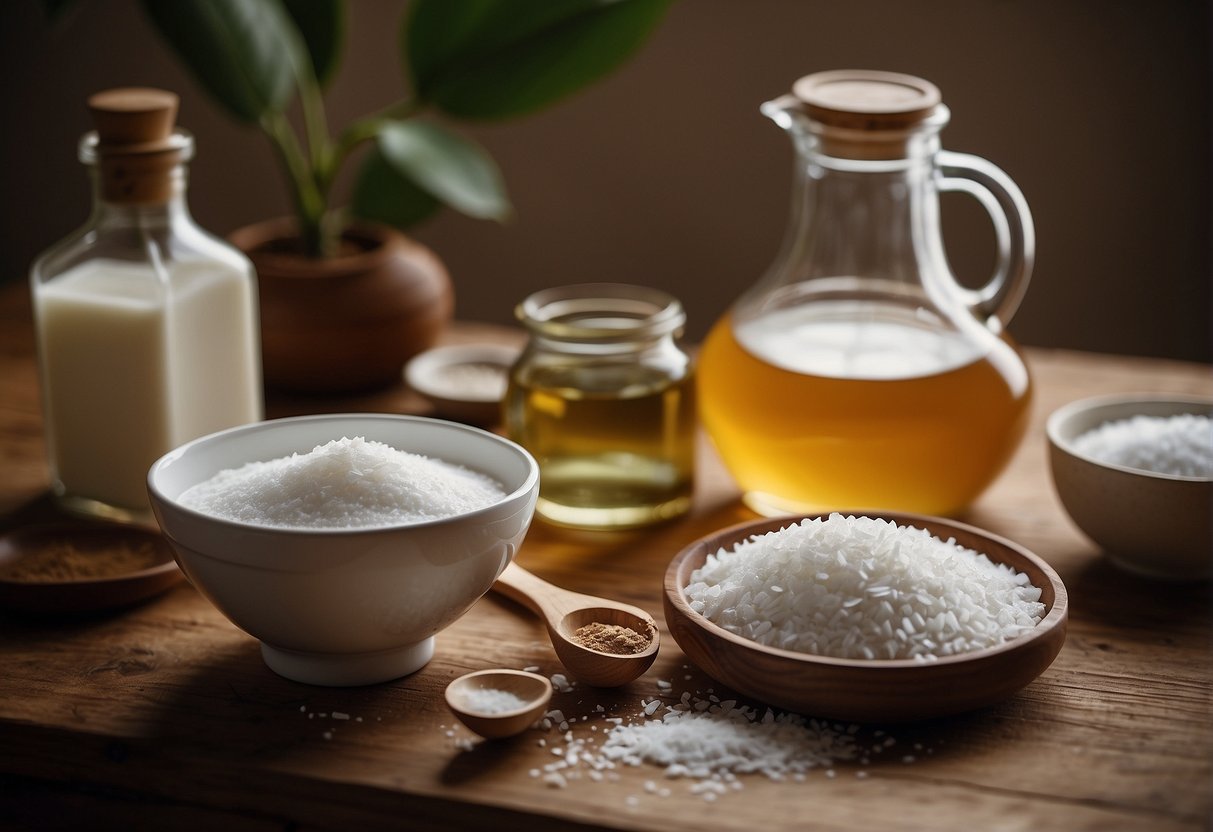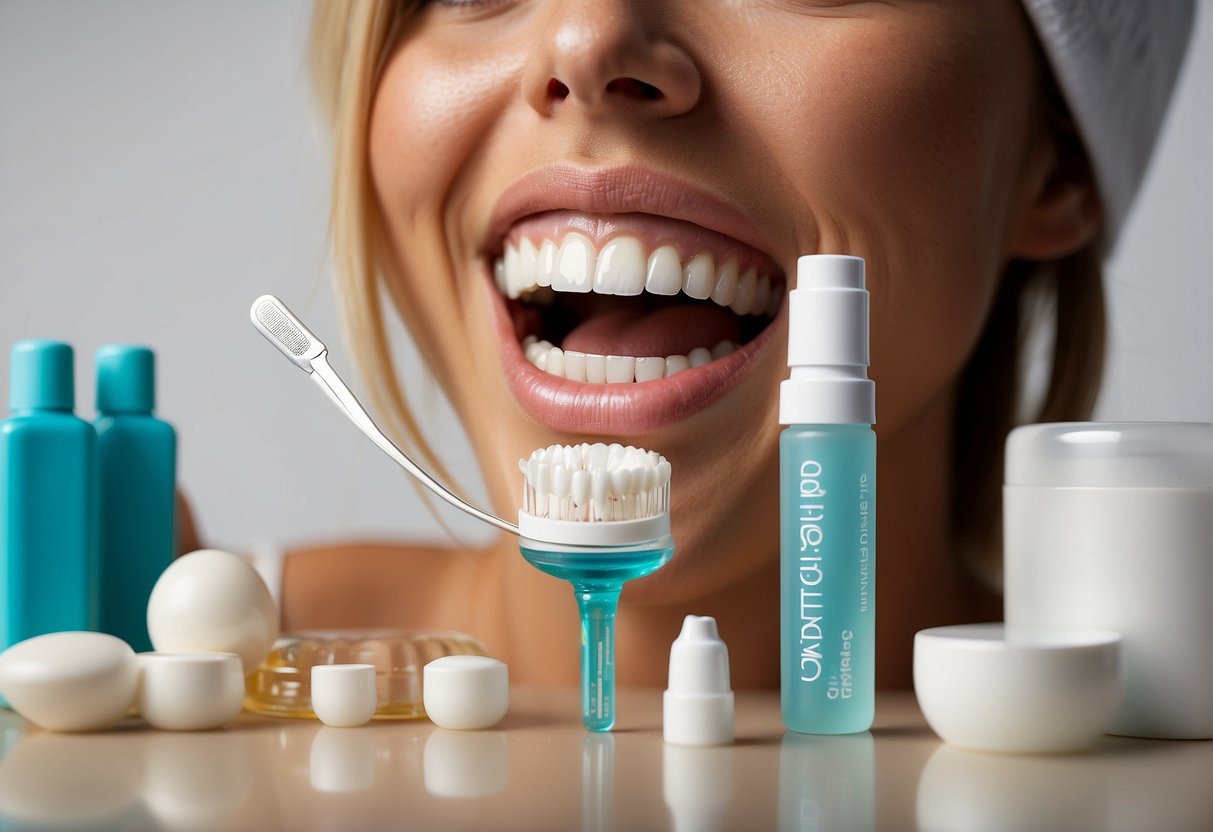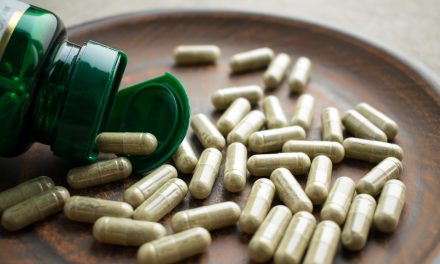Teeth whitening at home has become an increasingly popular method for people looking to brighten their smiles without the expense and time commitment of professional treatments. Many individuals seek at-home solutions to address discoloration caused by food, drinks, or natural aging. With the convenience of home-based remedies, teeth whitening can be easily incorporated into one’s dental care routine.
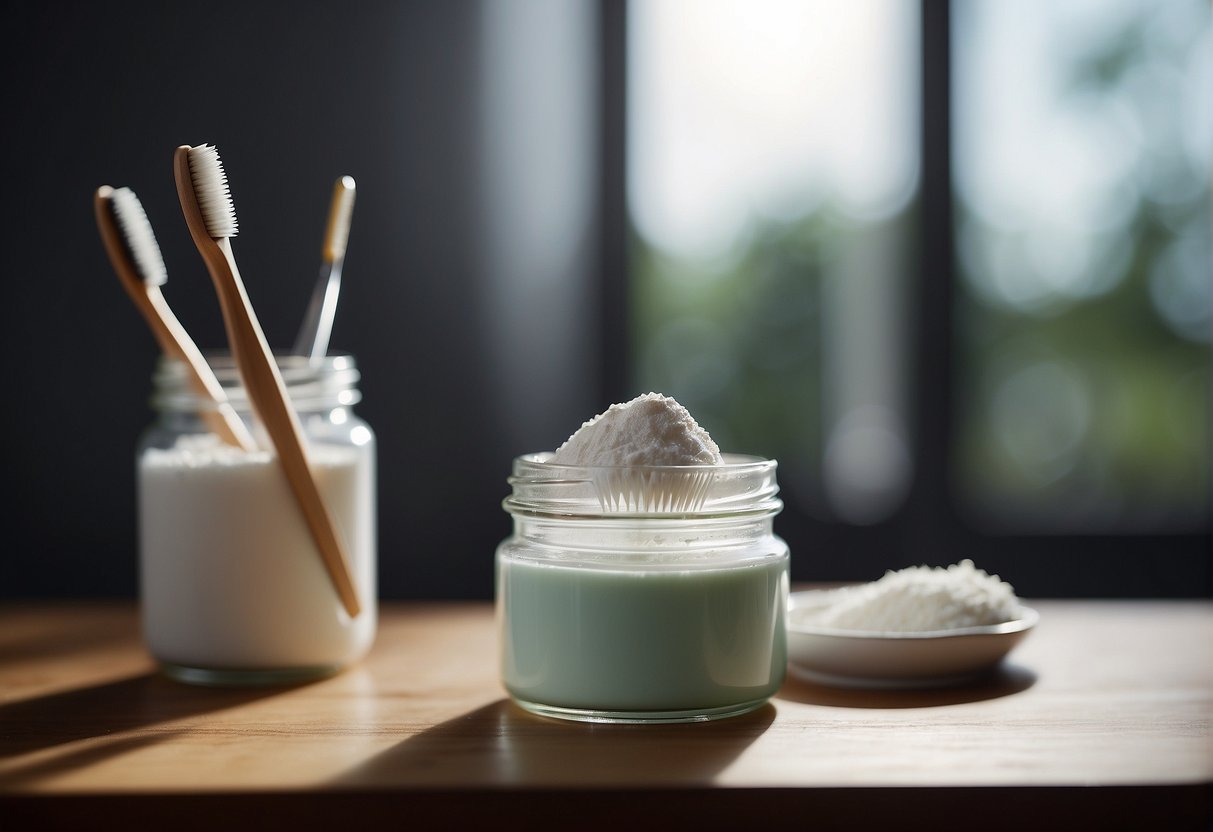
There are various do-it-yourself methods and over-the-counter products available for teeth whitening. These range from homemade pastes using common kitchen ingredients to specialized whitening strips and gels. When considering an at-home whitening approach, it is crucial to understand which ingredients are effective and safe for use. Consistent application techniques and assessing progress can help maintain whiteness over time, but users must also be aware of potential risks and follow recommended safety precautions.
Key Takeaways
- At-home teeth whitening is a cost-effective alternative to professional treatments.
- Safe and effective ingredients are crucial for DIY whitening success.
- Regular maintenance and technique are important for sustained results.
Understanding Teeth Whitening
Effective teeth whitening requires a grasp of the underlying causes of discoloration and the benefits that may be reaped from the whitening process.
The Science of Teeth Discoloration
Tooth discoloration can result from various factors, which typically fall into two categories: extrinsic and intrinsic. Extrinsic discoloration affects the outer layer of the tooth, the enamel, and can be caused by:
- Food and Drink: Coffee, tea, red wine, and dark sodas
- Tobacco Use: Smoking or chewing tobacco
- Poor Dental Hygiene: Insufficient brushing and flossing
Intrinsic discoloration, on the other hand, affects the inner structure of the tooth, called the dentin. This can be prompted by:
- Medication Use: Certain antibiotics, antihistamines, and high blood pressure medications
- Trauma or Disease: Impact injuries or diseases that affect enamel formation in children
- Aging: The natural process that thins the enamel, revealing the yellowish dentin
Benefits of Teeth Whitening
Teeth whitening is a cosmetic procedure that can have significant advantages:
- Aesthetic Improvement: Whiter teeth can enhance the beauty of a smile and contribute to an individual’s self-confidence.
- Perception of Hygiene: Bright teeth are often associated with good oral health and hygiene practices.
- Special Occasions: Whitening can be especially popular for events such as weddings or job interviews where an improved appearance is desired.
- Non-invasive: Teeth whitening options often do not require invasive dental work.
Safety Precautions
When whitening teeth at home, it’s vital to prioritize safety to prevent any potential harm to one’s oral health. This involves understanding how to manage sensitivity and protect the gums during the whitening process.
Sensitivity Considerations
- Identify Susceptibility: Individuals with sensitive teeth should consult a dentist before using at-home whitening products.
- Use Lower Concentrations: Opt for whitening products with lower hydrogen peroxide concentrations to reduce the risk of sensitivity.
Gum Protection Tips
- Barrier Application: Apply a barrier, such as petroleum jelly, on the gums before using whitening agents to shield them from exposure.
- Avoid Overuse: Limit the application of whitening products to the recommended duration to prevent gum irritation.
DIY Whitening Ingredients
Numerous ingredients found at home can be used for teeth whitening. These alternatives are simple to use and can be effective with consistent application.
Baking Soda Methods
Baking soda, or sodium bicarbonate, is a mild abrasive that can help remove surface stains on teeth.
- Paste: Mix 1 teaspoon of baking soda with water to create a paste. Apply it to the teeth using a toothbrush, brush gently, then rinse.
- With Toothpaste: Add a small amount of baking soda to your regular toothpaste for added whitening effects.
Hydrogen Peroxide Solutions
Hydrogen peroxide is an oxidizing agent commonly used in commercial teeth whitening products. It can be used at home with caution.
- Rinse: Dilute hydrogen peroxide with water (1 part peroxide to 2 parts water) and use it as a mouth rinse, swishing around for one minute before rinsing out.
- Paste: Combine 2 teaspoons of baking soda with 1 teaspoon of hydrogen peroxide to make a paste. Apply to teeth for a few minutes, then rinse.
Natural Whitening Alternatives
There are natural substances that people often use to try to brighten their teeth.
- Apple Cider Vinegar: Use it as a rinse, diluting with water. It’s acidic, which means it can remove stains but should be used sparingly to avoid enamel damage.
- Fruit Peels: Rubbing teeth with banana, orange, or lemon peels is believed to make teeth whiter. These fruit peels contain citric acid, which may help in removing surface stains.
Everyday Habits for Whiter Teeth
Maintaining whiter teeth can be achieved with consistent daily habits. These practices focus on both dietary choices and oral hygiene.
Dietary Choices
Limit Staining Foods and Beverages:
- Coffee
- Tea
- Red wine
- Dark-colored sodas
- Berries
Incorporating teeth-friendly foods into one’s diet can help prevent staining. Dairy products like milk and cheese can neutralize acids, and crunchy fruits and vegetables like apples and carrots help scrub teeth clean.
Consume Foods That Promote Oral Health:
- Cheese
- Milk
- Nuts
- Crunchy vegetables
They should also drink plenty of water to rinse away food particles and staining agents.
Oral Hygiene Practices
Brush and Floss Regularly:
- Brush at least twice a day.
- Use fluoride toothpaste.
- Floss daily to remove plaque and food particles between teeth.
It’s important to brush gently with a soft-bristled brush to avoid damaging tooth enamel.
Use Whitening Products with Caution:
- Whitening toothpaste
- Whitening strips
- Mouthwashes with hydrogen peroxide
Individuals may consider occasional use of over-the-counter whitening products. However, they should consult with a dentist beforehand, especially if they have sensitive teeth or dental restorations.
Homemade Whitening Pastes
Homemade whitening pastes can be a cost-effective alternative to store-bought products. They often use common kitchen ingredients, but one should exercise caution, as overuse or improper use can damage enamel.
Strawberry Salt Scrub
Ingredients:
- 1 ripe strawberry
- 1/2 teaspoon of baking soda
- A pinch of sea salt
Instructions:
- Mash the strawberry into a pulp.
- Mix in the baking soda and sea salt to form a paste.
- Apply the paste to the teeth using a toothbrush or finger.
- Leave on for 5 minutes, then rinse thoroughly.
Coconut Oil Paste
Ingredients:
- 2 tablespoons of coconut oil (solid state)
- 2 tablespoons of baking soda
Instructions:
- Combine the coconut oil and baking soda in a bowl.
- Stir until they form a homogeneous paste.
- Use the paste to brush the teeth for 2 minutes.
- Rinse the mouth with water.
Over-The-Counter Products
Over-the-counter teeth whitening products are an accessible and convenient option for improving your smile. These products generally contain varying concentrations of hydrogen peroxide or carbamide peroxide as their active whitening agents.
Whitening Strips and Gels
Whitening strips are thin, flexible pieces of plastic coated in a peroxide-based gel. Users typically apply them for 30 minutes a day, over a period of two weeks. The concentration of the active ingredient can vary, so one should follow the instructions included with the product for safe and effective use.
Whitening gels are clear, peroxide-based gels applied with a small brush directly to the surface of your teeth. Application instructions differ by the strength of the peroxide. Lower concentrations may be applied twice a day, while higher concentrations might be used once a day for a shorter period.
Whitening Toothpaste Selection
Whitening toothpastes typically contain mild abrasives and chemical agents that provide additional stain removal effectiveness. Unlike bleaches, these toothpastes do not change the color of the teeth, but they may remove surface stains, making the teeth appear whiter.
Here is a breakdown of what to look for in whitening toothpaste:
- Active Ingredients: Look for hydrogen peroxide or carbamide peroxide.
- ADA Seal of Acceptance: A toothpaste with this seal meets the criteria for safety and efficacy.
- Abrasive Levels: Low abrasivity is important to avoid enamel damage.
- Fluoride: This helps with cavity protection while whitening.
Users should select a product that balances whitening effectiveness with enamel safety and overall oral health. Continual use as directed can result in noticeably whiter teeth over time.
Techniques for Application
Achieving whiter teeth at home involves a disciplined approach and precise techniques to ensure effectiveness and safety.
Consistent Routine
They must establish a daily routine that includes teeth whitening procedures, such as using whitening strips, toothpaste, or gels. The routine can consist of two main parts:
- Morning: Brushing with a whitening toothpaste and flossing.
- Evening: Applying whitening strips or gels as per the product instructions.
Proper Application Methods
They should apply whitening products carefully to maximize contact with the teeth while minimizing gum exposure. Below is a step-by-step guide:
- Preparation:
- Brush and floss.
- Dry teeth for better adhesion of strips or gel.
- Application:
- Strips: Align with the gum line and press firmly.
- Gels: Use a syringe or brush for precise application.
- Timing:
- Wait the instructed amount of time, usually between 5 to 30 minutes.
- Avoid eating or drinking during this period.
Evaluating Progress
Monitoring the progress in teeth whitening at home is essential for ensuring effectiveness and safety. Proper evaluation can prevent overuse of whitening products and detect the need for professional dental consultation.
Tracking Whitening Effectiveness
A person can track whitening effectiveness by taking regular photographs of their teeth under the same lighting conditions to observe changes over time. Additionally, dental shade guides are available to measure tooth color progression methodically. Here’s an example of how to record changes:
- Baseline: Document the original tooth shade before starting any whitening treatment.
- Weekly Checks: Using the dental shade guide, compare the tooth color weekly.
- Photographic Records: Take a photo every week to have a visual reference of progress.
Tracking should be done consistently for accurate comparisons.
When to Seek Professional Advice
Individuals should seek professional advice if:
- They experience persistent discomfort or tooth sensitivity.
- There are no signs of improvement after following the recommended duration of home treatments.
- They notice uneven whiteness or spotting, which could indicate improper application or the need for a different treatment approach.
A dentist can assess oral health, recommend safe and effective treatment options, and provide guidance tailored to individual needs.
Maintaining Your Results
Achieving a brighter smile is only the first step; maintaining it requires consistent and careful attention to oral hygiene and lifestyle choices.
Post-Whitening Care
After teeth whitening treatments, one’s enamel may be temporarily more porous, making it essential to avoid substances that can stain teeth. For the first 48 hours, they should steer clear of:
- Coffee and tea: Opt for clear or white fluids that don’t deposit stains.
- Tobacco products: Abstaining from smoking or chewing tobacco, which can yellow teeth.
- Dark-colored foods: Such as red wine, berries, and soy sauce.
Using a whitening toothpaste once or twice a week can assist in removing surface stains, while daily brushing and flossing remove plaque and prevent tartar build-up.
Long-Term Maintenance Strategies
For long-lasting results, individuals should integrate the following habits into their daily routines:
- Routine dental visits: Schedule cleanings and check-ups every six months.
- Balanced diet: Consume foods high in calcium and phosphorus to support enamel strength. Examples include:
Calcium-Rich Foods Phosphorus-Rich Foods Cheese Fish Milk Poultry Yogurt Nuts - Straws for staining liquids: Using straws helps minimize contact with potentially staining beverages.
- Customized touch-up kits: As provided by some dentists, these can address new stains.
Developing these dental care habits contributes significantly to preserving the whiteness of one’s teeth over time.
Risks and Considerations
When considering teeth whitening at home, it is important to understand potential side effects and the limitations of over-the-counter products to ensure safe and effective outcomes.
Potential Side Effects
- Tooth Sensitivity: Whitening agents can cause temporary increased sensitivity to temperature, pressure, and touch.
- Gum Irritation: Products with peroxides may irritate the gums or cause white patches if not used carefully.
Limitations of Home Whitening
- Effectiveness: Over-the-counter whitening products are generally less potent than professional treatments, which can affect the degree of whitening.
- Consistency: Uneven results are common due to inconsistent application or varying strengths of whitening agents across different products.
Frequently Asked Questions
In this section, readers will find reliable answers to common inquiries about at-home teeth whitening methods and products.
What are the best at-home teeth whitening kits available on the market?
The best at-home teeth whitening kits typically include Crest 3D White Strips and the Smile Direct Club Bright On Teeth Whitening Kit. These kits are known for their effective results and ease of use.
How can I use hydrogen peroxide safely to whiten my teeth?
To safely use hydrogen peroxide for teeth whitening, one should dilute it with water to create a 1.5% to 3% solution and use it as a mouthwash before brushing their teeth. It’s recommended to limit the use to a few times a week and to consult with a dentist for guidance.
What natural remedies are effective for teeth whitening?
Natural remedies such as brushing with baking soda and using apple cider vinegar as a wash can be effective for teeth whitening. These substances can help remove surface stains, but should be used sparingly to avoid enamel damage.
Is it possible to achieve whiter teeth overnight, and how?
Whiter teeth overnight are not typically possible, as safe and effective teeth whitening is a gradual process. Over-the-counter whitening strips may offer a slight immediate improvement, but significant changes require consistent use over several days or weeks.
Can teeth that have yellowed with age be whitened, and what methods should be used?
Yellowed teeth due to age can often be whitened using peroxide-based bleaching agents found in at-home whitening kits or by professional treatments. Intrinsic stains can be more stubborn, often requiring prolonged bleaching regimens or professional assistance.
Are there any teeth whitening strips that provide professional results at home?
Yes, some teeth whitening strips, such as Crest 3D White Professional Effects Whitestrips, claim to provide results comparable to professional treatments. These strips contain higher concentrations of whitening agents and are designed for more effective at-home use.

